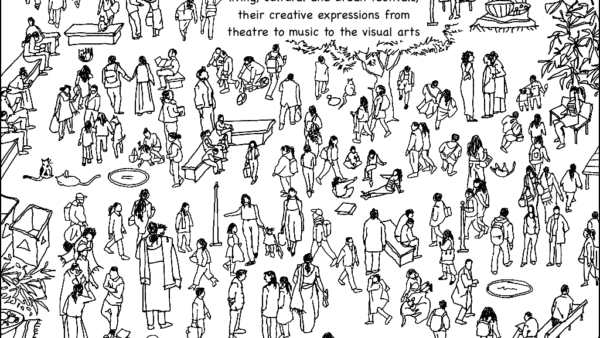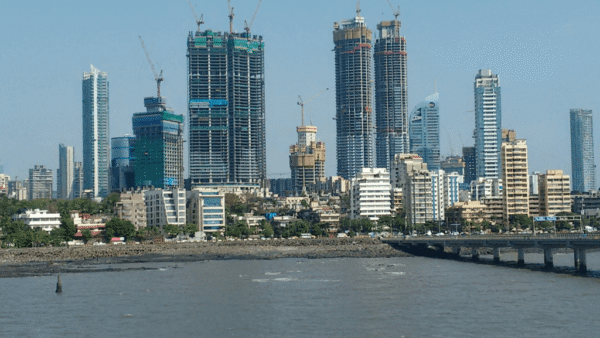Bansilalpet in Secunderabad, a quiet and lower-middle class area, has a pleasant and proud thing to look forward to in the New Year. An old stepwell that had turned into a dumping ground for all sorts of waste has been reclaimed and restored to a historical site that local residents can be delighted with and can become a tourist destination in the future. The ‘new’ or restored stepwell has elicited curiosity far beyond the Bansilalpet model village area and may well hold up as an example of placemaking.
There are hushed whispers about how the six-level stepwell, built in the 1930s by Seth Bansilal as part of a model village in Secunderabad, came to be used as a dumping ground. A story goes that murders in the area resulted in bodies being thrown into it in the 1980s, another is that someone died by suicide here after which people stopped using it. As happens with no-use land, it gradually became a receptacle for the area’s waste and debris. Before long, it had turned into a dumping ground, emanating a sickening stench and was an eyesore; the entire structure was dilapidated and latest plans were to turn it into a parking lot, reports stated.
Transforming it to restore it to its original typology has not only given Bansilalpet model village its stepwell back but also helped it harvest rainwater to prevent flooding in the area during torrential rain. In the congested and small-laned area, rainwater has little space to flow out. The importance of the restored stepwell, old but small water harvesting places, will be felt in the next monsoon.
For now, the Bansilalpet model village not only has a restored stepwell but an entire precinct with an amphitheatre, a tourism plaza, an interpretation centre, and space for a café or two which can become hubs for artists. The restoration work has also meant that the houses in the immediate neighbourhood of the stepwell got a new coat of paint and the area’s old narrow streets have new cobblestones. The precinct looks brighter and happier than anyone here can remember it in the past 35-40 years.
Every few hours, youngsters from the area and curious passers-by drop by to catch a glimpse of the restored stepwell; residents living with the view of the dumping ground have acquired a sudden significance. “It is amusing to see so many people coming here now. We never thought that a discarded structure, which we thought was dead, could transform our colony like this,” said Sai Teja, 25, a resident of Bansilalpet.
CP Shanker, 55, a social worker from Bansilalpet who lives a stone’s throw away from the stepwell, recalled swimming in it during his childhood. “The well was in fact connected to a different water tank in a slum behind this locality. Now, they have their own water lines,” he said. He joined others from the area who stated that the restoration has had a major impact on the groundwater besides the image enhancement the area has witnessed over the past year. “Earlier we would dig about 150-foot underground to install boring machines; it is now 30-40 feet. This restoration is a very good thing for all of us,” noted P Yadgiri, 60, a resident.
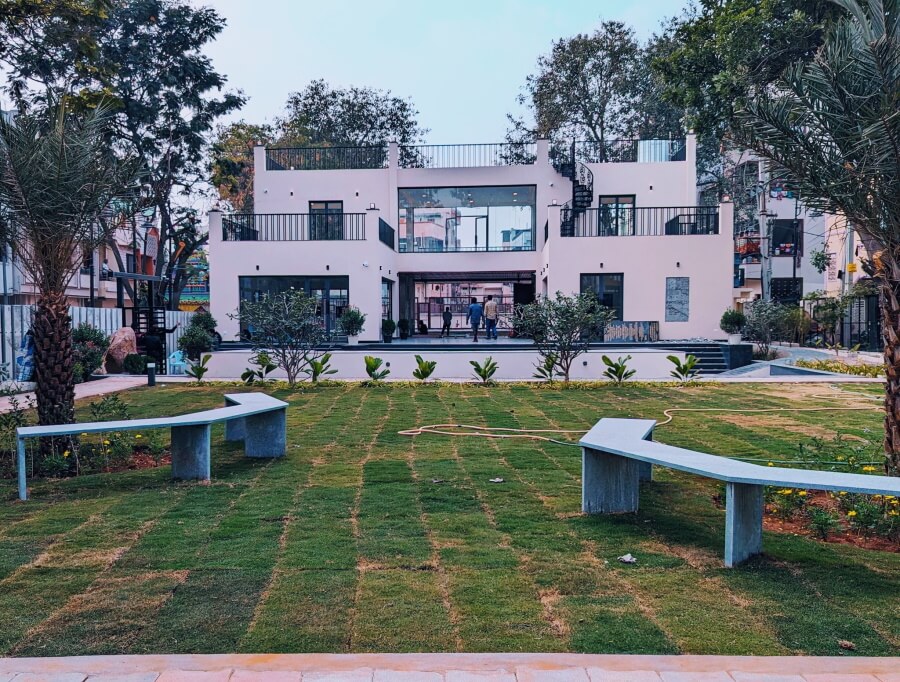
Photo: Ashish Chowdhury/ Twitter
Placemaking process
The work on restoring the stepwell and transforming the Bansilalpet model village began in June 2021 when conservationist Kalpana Ramesh took it up through her non-governmental organisation, The Rainwater Project, and signed a Memorandum of Understanding with the Telangana government. She had done similar projects including the Gachibowli stepwell. Among the many pieces of debris her team fished out was a transformer which means even municipal and state authorities were using it as a dump yard, she told this writer.
Ramesh has been interested in restoring wells as water harvesting structures, and began the complex work on the Bansilalpet stepwell when she was able to show that rainwater harvesting could prevent urban flooding; planning is now underway for operation and maintenance so that the stepwell becomes “a fulcrum of the society with curated events”.
It was important for Ramesh and her team to study the soil and water table in the area, and do the mapping of underground aquifers to better understand how the restoration would impact the groundwater condition, according to her website. The restoration process called for many steps: Cleaning the waste in and around the stepwell, dewatering and desilting it, cleaning it of stones and plant or vegetation growth, structural strengthening of the retaining walls, rebuilding the damaged portions of the stepwell, and lime plaster finishing work.
However, restoring the stepwell as an isolated place without changing any aspect of the area would be counterproductive. So, Ramesh and her team undertook, at a total cost of Rs 2.6 crore, a qualitative upliftment of the area around the stepwell by paving the streets with cobblestones, landscaping, painting facades of houses, and installing new signages. The restoration work also covered the Bansilalpet ‘kaman’ (arched entrance ways) atop the buildings that the stepwell was originally built around; the buildings now have shops and commercial establishments.
The team also conducted education workshops for local residents so that they could better appreciate the work done. The approach they took was not to merely restore or rebuild the Bansilalpet stepwell but also make it a sustainable project. Most of the budgeted amount came from the state government and a small balance was reportedly raised as grants. “Our idea is to have a holistic approach and not just to restore the well and leave it. We want to create a community here, where there is space for artists to come and sit,” Ramesh told this writer a day before the stepwell was formally inaugurated.
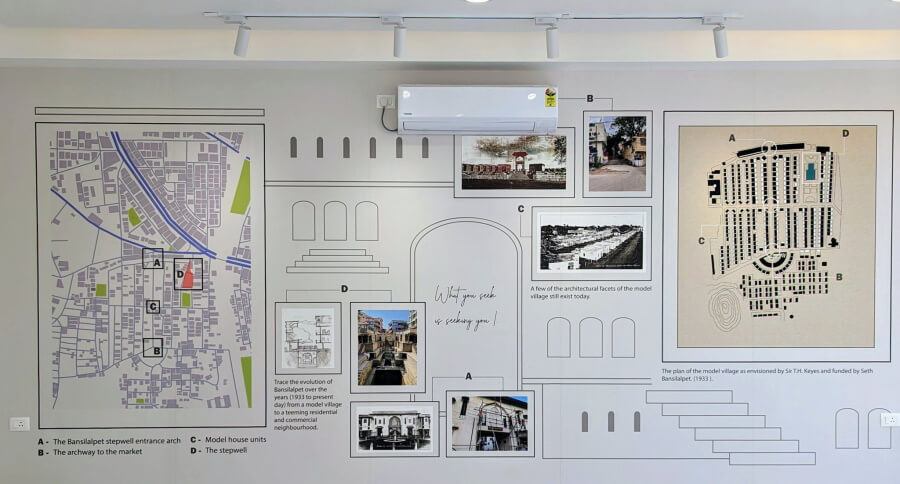
Photo: Ashish Chowdhury/ Twitter
Whither people?
When the stepwell restoration project was announced in 2021, residents of Bansilalpet were not enthused nor were their ideas sought. So, though the restoration has earned plaudits, rightfully so, it is important to note that local residents were not involved in the restoration project; it was the joint effort of the NGO, state departments, and the municipal corporation.
The project thus falls into the classic trap of a top-down, government-NGO restoration or placemaking work without much involvement of people or building a people’s movement towards the outcome. In this sense, the project satisfies only a part of the placemaking purpose – transforming a site to make it more meaningful to people – but does not adopt the more evolved forms of placemaking which call for ground-up efforts and involving people in key decision-making and transformation processes.
The non-involvement of local residents makes them beneficiaries of the project, not participants in a process whose outcome was meant for them. It has been heard in the area that residents will not have unregulated or unrestricted access to the stepwell precinct; they may have to follow the regulations meant for visitors. How this pans out will become clearer in the weeks ahead.
The process acquires significance because more such restorations are planned. At the inauguration in December 2022, the state principal secretary (municipal administration and urban development) Arvind Kumar, who oversaw the Bansilalpet project, announced that the government would undertake restoration of ten similar stepwells in Hyderabad.
“It will definitely pave way for us to restore more monuments. The process has already begun and hopefully we will see more such restorations in the next year,” said an official from the Municipal Administration Department. “Arvind Kumar sir is interested in restoring more stepwells in the city. Apart from the Bansilalpet stepwell, Kalpana Ramesh will also be undertaking similar projects with the state government,” said M Mahesh, public relations officer in minister KT Rama Rao’s office.
History brought alive
The Bansilalpet stepwell restoration is not an isolated project. In the last few years, there have been efforts to restore and rejuvenate old dilapidated structures with the aim of bringing them into mainstream consciousness of Hyderabad-Secunderabad. The Qutb Shahi tombs and the Golconda Fort have been restored. Another important historical site restored was the British Residency, the seat of British power under the Nizams. The Telangana government also announced that it will restore the Shaikpet Sarvai, a 17th century Golconda-period resting place for travellers, situated close to the Golconda fort.
The Bansilalpet stepwell project may even become the blueprint for the restoration of smaller and lesser-known monuments, especially stepwells. In the process of the physical restoration, Ramesh and her team chanced upon a freshwater source 20-25 feet deep under the stepwell. This led to an increase in the overall water carrying capacity of the well and could help the residents fulfil some of their water needs.
Unlike the Nizamuddin Basti where the stepwell has a shrine attached to it and other small monuments in the precinct or immediate vicinity, the Bansilalpet stepwell is the only major monument there. Hyderabad has several stepwells, usually as part of larger monuments – temples like the Sitarambagh temple has one, the Hayat Bakshi Begum Masjid has stepwells, even some old-era private residences have them. It is difficult to get a comprehensive number but residents point to stepwells which have fallen into disuse and become derelict structures.
There are questions about the age of the Bansilalpet stepwell. Some say that there are maps from 1850s in which it is supposedly marked but a plaque in the area put up recently showed that the Bansilalpet model village was developed around the stepwell by the then British Resident TH Keyes in 1933 and was funded by local businessman Seth Bansilal after whom the area took its name. Seth Bansilal, among the more famous Marwaris in Hyderabad, came from the well-known Pittie clan.
The stepwell is in close proximity to the centuries-old Hussain Sagar Lake built in the mid-16th century. Through the Quli Qutb Shah era, the Mughal invasion in 1687, the Nizam era followed by the British period, the city saw the development of lakes, ponds, and stepwells both as water sources and oasis for people’s pleasure. Over time, this network of water bodies fell into disuse and held little attraction for a city that was transforming itself into a hi-tech urban centre. Seen against this perspective, placemaking efforts such as restoration of old and small monuments acquires significance.
As in Bansilalpet, another site where stepwells have been in focus is the Qutb Shahi tombs site, where rulers of the Golconda dynasty lie buried. The necropolis and precinct have been under restoration from about a decade, funded by the Aga Khan Trust for Culture and the state government. It recently bagged the ‘Award of Distinction’ at the UNESCO Asia-Pacific Awards for Cultural Heritage Conservation. “The restoration of the stepwells of Golconda has realised an ambitious, long-term vision for renewing the extensive complex of architectural and social spaces within the 16th century Qutb Shahi necropolis,” said UNESCO’s citation presented in November.
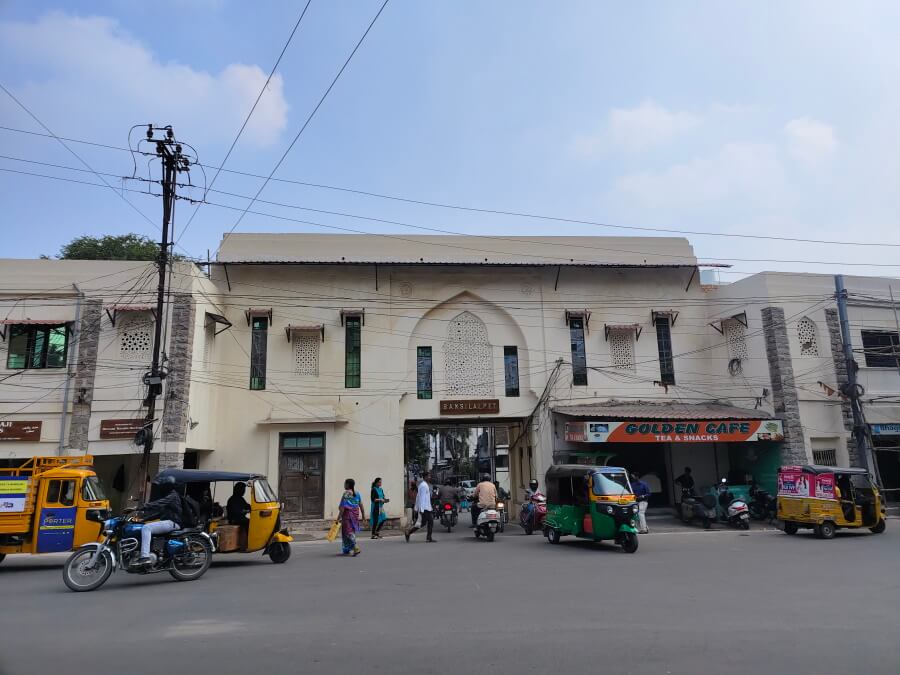
Photo: Yunus Lasania
Restoring stepwells and similar monuments in areas across the city means significantly enhancing the quality of life and reviving pride among the younger generation, said Ratish Nanda, CEO of the Aga Khan Trust for Culture. When the Qutb Shahi stepwell restoration work is complete, it will rank among the more significant tourist attractions in the city; the restoration process revealed the Edgar Baoli in the complex. “Any monument needs to be taken care of as an irreplaceable asset but it is also an economical asset as it improves the quality of life in an urban space. In a stepwell, our purpose was to primarily make the site net zero for water needs,” Nanda said to Question of Cities.
The Aga Khan Trust’s team restored a stepwell inside the Nizamuddin Basti in New Delhi years ago. The stepwell was found in a precarious situation but it was eventually rejuvenated. The challenge was that local families in the Basti had nestled close to it, putting the water body in peril; they were eventually relocated with consent as part of the project.
This goes back to the question of people’s participation or involvement in restoration or placemaking projects where local residents are often seen as beneficiaries if not as impediments. Restoring places or sites with people’s participation should be the way ahead.
Yunus Lasania is a Hyderabad-based journalist with a decade of experience in reporting issues in Andhra Pradesh and Telangana. His deep love for Hyderabad and its history is showcased in his Instagram page, The Hyderabad History Project. He also hosts Beyond Charminar, a podcast series on the history of Hyderabad, focussing on the lesser-known aspects of the city.
Cover photo: Ashish Chowdhury/ Twitter


